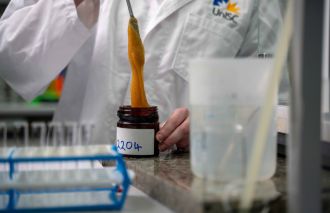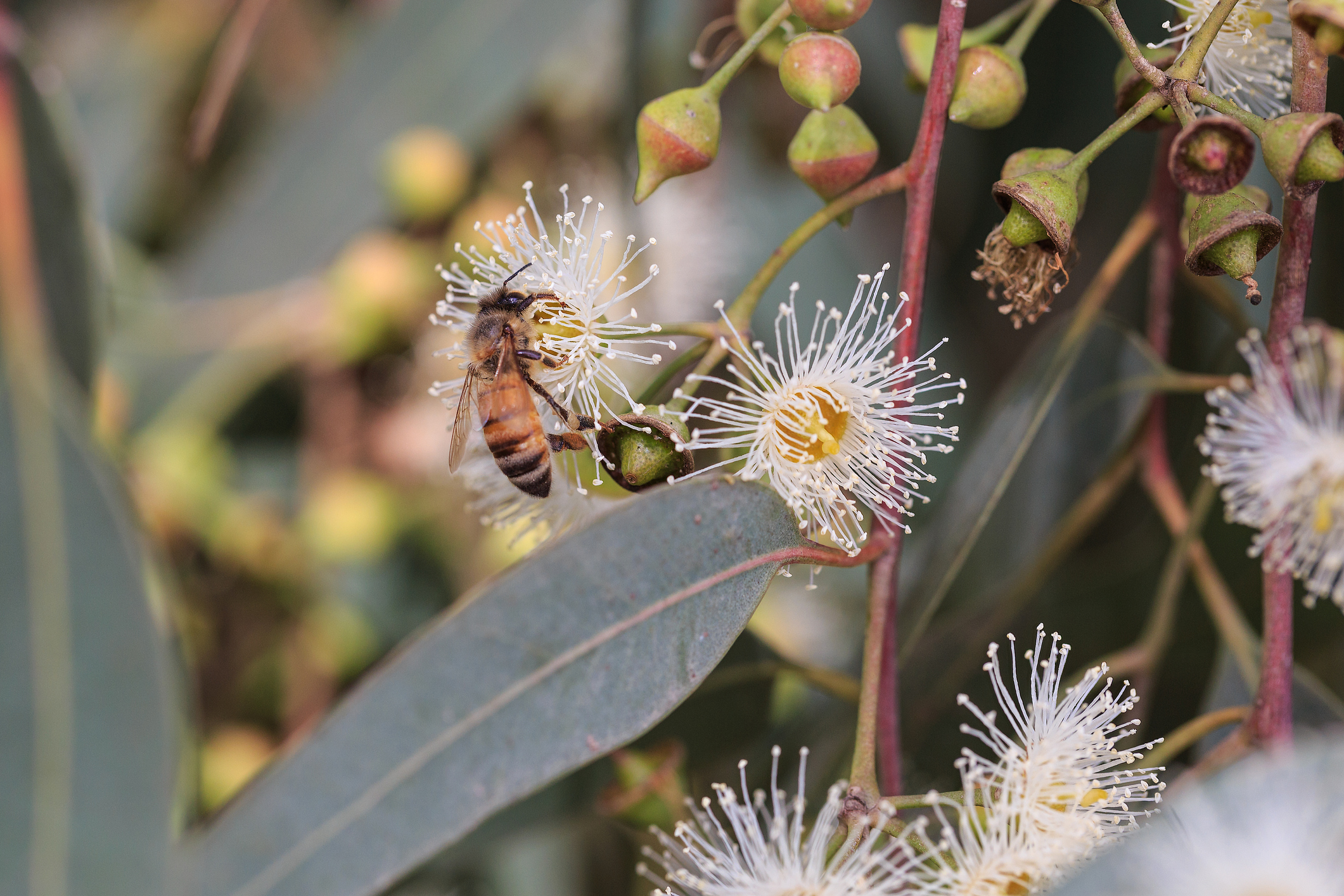Media release
From:
University of the Sunshine Coast researchers experienced in authenticating manuka honey have developed a new rapid, affordable test that can help identify the next premium Australian honeys.
Brush box, grey ironbark, macadamia and spotted gum are among seven native honeys already tested with the new extraction method at UniSC’s Honey Lab, which is renowned for authenticating highly prized manuka honey.
The findings, published in Food Chemistry, have the team buzzing after 10 years of helping beekeepers and honey producers across Australia measure the quality of their manuka products.
Checking the quality of honeys is vital across the world, given the lack of consistent regulations and the rise in adulterated products including ‘fake’ manuka labelling, causing problems in a multi-billion-dollar industry.
“We used the new method to test for 109 phenolics – also known as aromatics – and more than half of these valuable compounds were found in the Australian honey samples,” says lead author Georgia Moore.
“That’s exciting because phenolics are a major determinant of honey quality, contributing to anti-inflammatory, antimicrobial, antioxidant, anti-diabetic and anti-carcinogenic properties, as well as flavour.
“Honeys with these nutritional and medicinal properties generate great interest and consumer demand for their products.
“Phenolic compounds can also serve as markers of floral origin, helping to confirm honey authenticity.”
The other three plant species tested were coolibah, mugga ironbark and yapunyah. Previous extraction methods were more expensive, time-consuming and complicated.
Research co-supervisor Dr Peter Brooks, who helped pioneer manuka authentication in Australia, says the validation of the new extraction method in all seven mono-floral honey types is significant.
“It’s an important step in authenticating Australian mono-floral honeys, which have one identifiable plant of origin,” he says.
“Substantiating the floral and even regional origin of honey varieties is important for Australia’s reputation as a safe, reliable honey producer and for the sustainability of the industry.
“This evidence could lead to other varieties commanding a higher market share and price, because consumers generally will pay higher prices for mono-florals over multi-floral or bush honeys.”
The results are even sweeter because they build on the team’s study published in the journal Measurement: Food that found high levels of a key aromatic compound from leptospermum plants in several Australian manuka honeys.
Leptospermum is a type of tea tree and its nectar is the source of manuka honey in both Australia and Zealand. Australia has more than 80 species and New Zealand has seven.
“This study confirmed that the compound, known as Manuka Marker 1, is not limited to a single species from only one country of origin,” says Dr Brooks.
“Both studies together indicate that Australian beekeepers have access to a botanical bonanza not just for manuka, but for other premium varieties with various properties and qualities”.
As the laboratory continues the research, project leader Dr Asmaa Boufridi says the aim is to form a phenolics database for other varieties of Australian honey, to support future labelling.
“Authentic labelling will improve the traceability of honey products to provide quality assurance,” says Dr Boufridi, a natural products chemist.
“Further studies aim to analyse more samples of each variety for their phenolic content, as well as other popular Australian honeys over several years, regions and seasons.”
The lab’s phenolics research started by profiling the exclusive Tasmanian Leatherwood honey, with those results also published recently in Current Research in Food Science.
In the paper, a distinctive phenolic marker identified in that honey was also confirmed in the nectar of the endemic plant, verifying the honey’s floral origin.
Ms Moore, a UniSC Biomedical Science Honours graduate who works with Chau Tran and paper co-author Linda Pappalardo, says the lab is using science to improve global awareness of Australian honeys.
Lab partners have included Hive & Wellness Australia, the Australian Manuka Honey Association, AgriFutures Australia and the former CRC for Honey Bee Products.
Multimedia




 Australia; QLD
Australia; QLD



